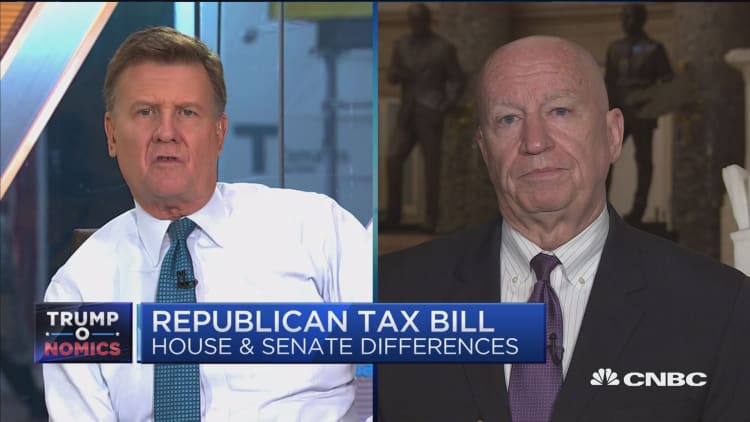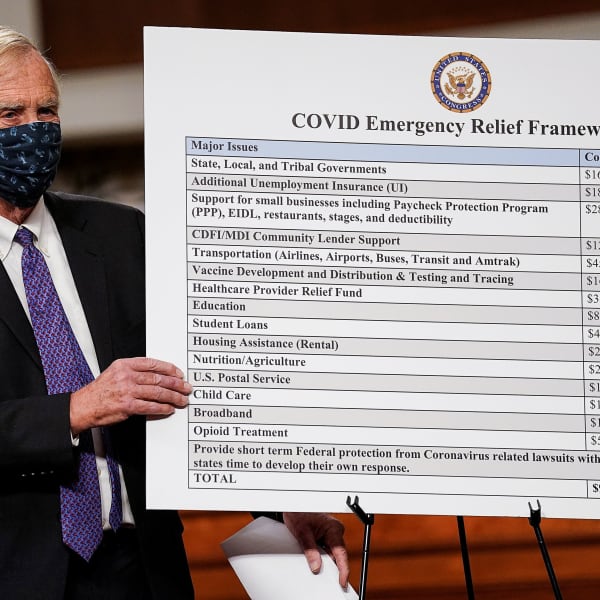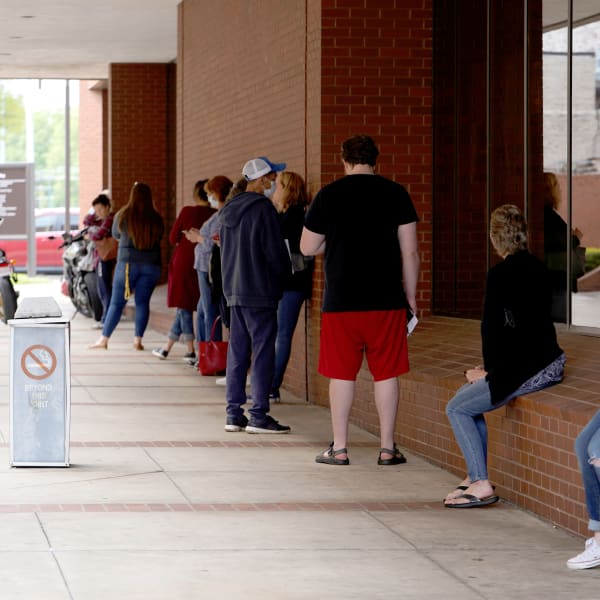The one thing most entrepreneurs can agree they want from their government is to support their risk-taking rather than put up roadblocks. The current Obamacare fight puts business owners in a tough spot.
The ACA enrollment season just ended on Friday, and entrepreneurs must make decisions about health care for themselves and their employees in an atmosphere of uncertainty and with mainstays of Obamacare under continued threat. The tax reform plan still being finalized by Congress is expected to include a repeal of the ACA's individual mandate.
"We talk about the entrepreneurial spirit and formation of new businesses being at the core of our resilience and strength as an economy," said Dave Yeske, CFP, managing director of Yeske Buie. "That entails people being unconstrained by other considerations, like not being able to give up their big-company health coverage."
President Donald Trump already cut off cost-sharing reduction payments that help offset out-of-pocket health insurance costs, such as co-payments and deductibles, for low-income Americans covered under the ACA. He also slashed the advertising and support budget for the ACA open-enrollment season by 90 percent, which health-care experts say could result in a lower enrollment total than last year and serve as another trigger for higher premiums.
Recent weekly enrollment numbers have been down from last year, and even though there was a surge as the deadline approached this week, many experts expect the final enrollment figure for 2017 to fall short of last year's pace.
Even before these direct hits on the ACA, premiums were expected to rise in many states. Insurers that went ahead and factored a potential cost-sharing reduction halt, or repeal of the ACA's individual mandate, into their summer requests to states for premium increases projected spikes of above 40 percent. Insurers in Idaho, Maryland, New Mexico, Tennessee and Virginia cited the CSR or other anti-ACA moves for between 10 percent and 20 percent of their anticipated higher plan premiums.
Entrepreneurs already hit hard by health insurance costs
Health-care coverage has already become a scarcer commodity among smaller companies: Only 50 percent of companies with three to 49 employees offered health insurance to employees in 2017, according to a Kaiser Family Foundation survey. That's a big drop from a decade ago, when 66 percent of small businesses offered coverage. The reason: For 44 percent of the small-business owners, it comes down to cost.
The latest CNBC/SurveyMonkey Small Business Survey released this week found that cost of employee health care remains a key concern for small-business owners, with 16 percent citing it as their business' "most critical" issue. It was second only to taxes. Among a subset of larger small businesses — those with 10 to 49 employees — cost of health care was the No. 1 "most critical" issue, the survey found, with 26 percent of owners in this group citing it at No. 1 compared to taxes, customer demand, labor costs and cost of capital/debt.
According to Kaiser's annual Employer Health Benefits survey, small-business employers contribute nearly $5,500 on average for single-employee coverage premiums and almost $11,000 for family coverage premiums. The employees of small businesses, meanwhile, pay more than $1,000 on average for single-coverage annual premiums and near $7,000 for family coverage. Workers covered by small firms contribute $1,550 more annually for family health coverage than those at large firms. What's more, 37 percent of covered workers at small firms are in a plan with a deductible of at least $2,000, compared to 15 percent for workers at large firms.

"I don't think mucking around with the ACA and trying to make the wheels come off is going to help small-business owners," said Yeske, who is also director of Golden Gate University's financial planning program. As he recalls, prior to the ACA, it was "difficult or impossible" for many to buy individual policies for themselves or their employees.
Among half of all businesses with less than 50 employees that did not offer health insurance to workers this year, 16 percent said they provide funds to their workers to purchase health insurance on their own in the individual market or through the ACA marketplaces. But only 2 percent said the most important reason is that their employees can get a better deal in the marketplaces.
Entrepreneurs do have options to protect themselves from higher costs, or the inability to access the coverage they and their employees need, if the ACA is continually changed and premiums rise as expected.
Here are four ideas:
1. Do your homework on association health plans.
Under an executive order issued by Trump earlier this year, federal officials have been charged with looking for a way to bring back association health plans. Prior to Obamacare, these health plans were often offered through trade associations to their members. Under Trump's executive order, small businesses would be able to band together to offer these plans.
Prior to Obamacare, associations could decide which state's insurance rules they wished to follow, which sometimes resulted in skimpy plans that were most beneficial to young, healthy members who wanted to save on premiums. The ACA changed that, treating the associations as small businesses and saying they had to follow all of the law's requirements.
While supporters say association health plans will be able to offer lower premiums because of lower regulatory requirements and better bargaining power, The Commonwealth Fund — a private foundation that does independent research on health-care issues — says they would undermine the ACA's protections for people with preexisting conditions. It has also noted that in the past, AHPs have taken advantage of regulatory exemptions from consumer protections, such as guaranteed access to coverage and benefit standards.
"Even if we were to see association health plans out there again, my concern would be: Are they offering less rich coverage than we have now under the ACA?" said David Solomons, senior vice president, employee benefits at GFI Insurance Brokerage in New York. And though they might offer lower premiums, there is the risk those premiums would rise if members of the association file a lot of expensive claims.
Solomons explained: "Let's say you join an association in trucking. You don't have a lot of young people going into trucking. If you have a risk pool made up of predominantly older people, you might see an initial reduction in administrative costs, but eventually your claims costs are going to skyrocket."
2. Understand the limitations of short-term insurance.
Trump's executive order also instructed several federal agencies to consider reversing a directive from the Obama administration that limited short-term, limited-duration insurance plans to three months. Those who only had these plans were subject to a penalty for lacking insurance under the ACA.
Given the cost of health insurance, many people, including self-employed people who found the cost of traditional insurance daunting, have in the past found it tempting to use these plans, stringing together several short-term health plans as a substitute. To prevent this, the Department of Health and Human Services issued a rule that limited them to three months' duration, down from a maximum of 12 months, effective April 2017.
As Solomons noted, they come with some risks.
"If you look at how many of the insurance companies are pulling out of the Obamacare exchanges because they cannot make money, I don't know that offering a short-term policy will be any more of a moneymaker for them," says Solomons. "If they offered it at a lower premium, the benefit would be reduced so much, the individual would have a pretty significant burden placed on them."
3. Keep your eye on news about Health Reimbursement Arrangements.
These are employer-sponsored plans that allow the employer to reimburse the employee for certain types of health-care expenses on a tax-free basis. Currently, they are not portable, meaning if someone leaves their job, they stay with the employer.
Trump's executive order aims to "increase the usability of HRAs to expand employers' ability to offer HRAs to their employees and to allow HRAs to be used in conjunction with nongroup coverage."
This means the employer could potentially give money to employees in an HRA so the employee could buy health coverage on his or her own, Solomons said. "For employers with more than 50 employees, a HRA is a great way to help employees fund part of a high-deductible health plan's large deductible using the savings recognized by the lower premiums," he said. "Actuarially, we know that not all employees will need to utilize the money available in the HRA, so for the employer it's a great way to make available a specific benefit (i.e. funding part of the high deductible) to all [while only funding] for those who actually incur claims against their deductible."
Currently, to have an HRA, the employer must offer — or the employee must be enrolled in — health insurance, either with the employer or with their spouse. The president's directive would further expand it to allow the employee to be covered under an exchange or individual policy, as well.
Prior to Trump's executive order, employers not offering ACA-approved group health insurance but instead offering a small employer HRA could be fined up to $100 a day, Solomons said.
HRAs differ from the current Qualified Small Employer Health Reimbursement Arrangement (QSEHRA), which was resurrected at the beginning of 2017 to allow for reimbursement payments to employees who purchased individual health insurance on the exchange because their employer had less than 50 employees and did not offer group health insurance. Currently, maximum employer contributions for these are limited to $4,950 for employee-only coverage and $10,000 for family coverage. The standard HRA has no contribution limit.
4. Speak up against inequities in the tax code.
Keith Hall, a CPA who is president and CEO of the National Association for the Self-Employed, notes corporate CEOs have their health insurance paid for by the company, and it's fully deductible from federal income tax and not subject to FICA (made up of Social Security and Medicare).
"The self- employed person pays up to 15.3 percent more for their health insurance because it isn't fully deductible, as it is for big business," said Hall, whose organization has pushed for changes that would allow for the deduction of health insurance costs for self-employment tax purposes. "I can't even imagine in my most remote fantasies why that has been allowed to happen."
The only certainty about GOP efforts to repeal the Affordable Care Act is that no matter what happens in 2017, these efforts won't end. House Speaker Paul Ryan said in an interview with Reuters in October that even if the GOP stopped trying to repeal the ACA this year, it should try again in 2018.
— By Elaine Pofeldt, special to CNBC.com





